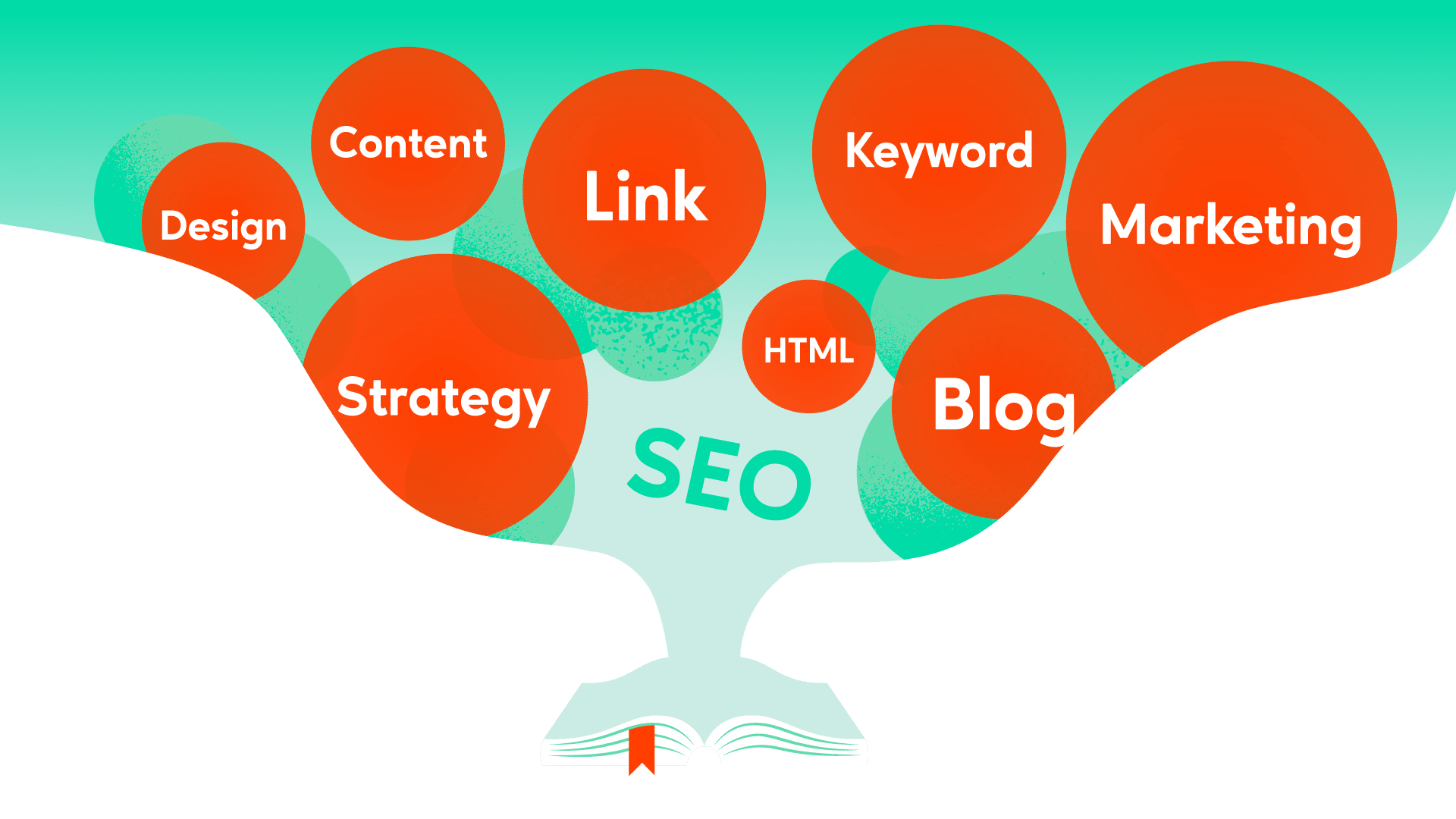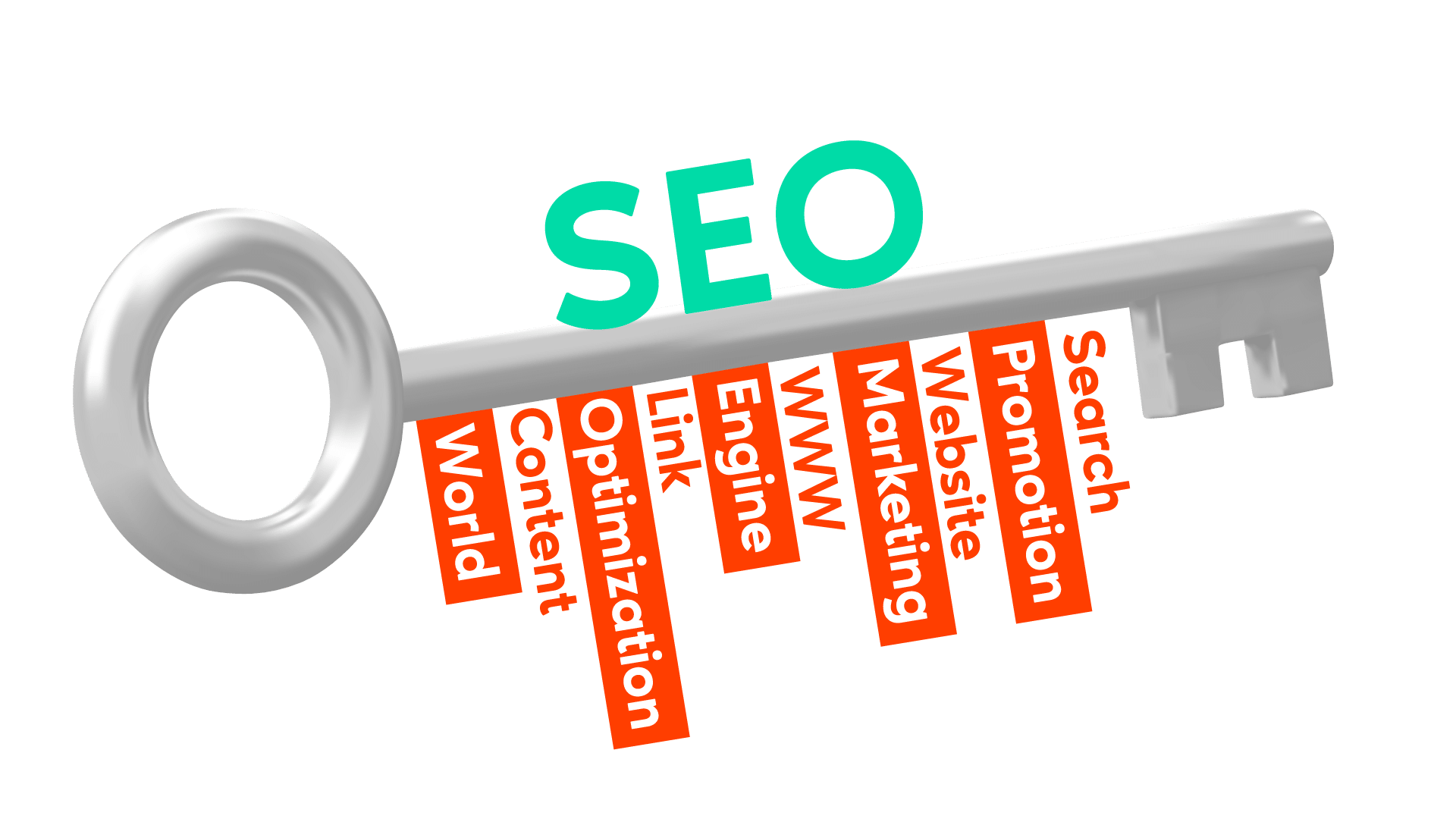What is SEO? A Guide to Grow Your Business in 2024

บทความน่าอ่าน
What is SEO? A Guide to Grow Your Business in 2024
Are you familiar with the term SEO but unsure of what it really means?
In this SEO guide, we will delve into the world of search engine optimization and demystify its key components.
Whether you’re a business owner looking to increase online visibility, grow business or a curious individual wanting to understand the inner workings of search engines, this article will provide you with a comprehensive overview of SEO.
Let’s begin….
What is SEO
SEO stands for Search Engine Optimization. It is the practice of optimizing websites and web pages to improve their visibility and rankings on search engine result pages (SERPs).
The goal of SEO is to increase organic search traffic or non-paid traffic to a website by ensuring that it appears high in the search engine rankings when users search for relevant keywords or search phrases.
SEO involves various techniques such as:
- Keyword Research,
- On-Page Optimization,
- Technical Optimization,
- Link Building, And
- Content Creation
to improve a website’s visibility and drive more organic traffic.
Why Is SEO Important?
SEO is important for businesses and websites for several reasons.
Here are some research data to understand why SEO is important:
1. Organic Traffic
According to a study by BrightEdge, organic search drives over 51% of all website traffic, while paid and social media each account for only 10%.
This highlights the importance of SEO in generating organic traffic, which leads to higher visibility and potential conversions.
2. Increased Visibility
Search engines like Google aim to provide the most relevant and useful results to users. By implementing SEO strategies, websites can increase their visibility in search engine rankings.
Research by Backlinko shows that the top-ranked organic result on Google is 10x more likely to be clicked on compared to the webpage in the 10th position.
3. User Trust and Credibility
People trust search engines to provide them with accurate and trustworthy information. Ranking high in search results instills confidence in users, and they are more likely to trust and visit websites that appear at the top of the search results.
Data from Search Engine Journal reveals that 75% of users do not go beyond the first page of search results, underscoring the significance of SEO for gaining user trust.
4. Higher Conversion Rates
SEO helps target specific keywords and optimize content to align with user intent and search intent. When users find the information they are looking for through organic search, they are more likely to convert into customers.
As per Hubspot‘s findings, SEO-generated leads have a 14.6% close rate, compared to outbound leads (such as direct mail and cold calling), which have a 1.7% close rate.
5. Competitive Advantage
Businesses that invest in SEO gain a competitive edge over their rivals. Research from Webfx shows that 93% of online experiences begin with a search engine, indicating that businesses without a strong SEO presence may lose out on potential customers to their competitors.
6. Cost-Effective Marketing
Compared to other digital marketing channels like paid advertising, SEO can provide a higher return on investment.
Studies show that users are more inclined to click on organic search results rather than paid ones. About 70% of users choose organic results, while only around 30% opt for paid results.
This makes SEO marketing efforts a cost-effective strategy for businesses looking to drive quality traffic and generate leads.
7. Mobile Optimization
With the increasing use of mobile devices, optimizing websites for mobile search has become vital. Google prioritizes mobile-friendly websites in its search rankings.
Whatsthebigdata found that 92.3% of people who use the internet prefer to access it using their smartphones rather than other devices.
By adopting mobile optimization through SEO practices, businesses can effectively reach and engage a wide range of potential customers.
SEO vs. PPC
PPC (Pay-Per-Click) and SEO (Search Engine Optimization) are two popular digital marketing strategies used to drive relevant traffic to websites.
While they both focus on increasing visibility in search engines, they differ in several key ways.
PPC involves paying for advertisements that appear at the top or side of search engine results pages.
Advertisers bid on search phrases and only pay when their ad is clicked. This method allows for immediate visibility and control over ad placement.
Recent data shows that the global digital advertising market is projected to reach $455 billion in 2022, with PPC accounting for a significant portion of this expenditure.
On the other hand, SEO is the process of optimizing a website to rank organically in search engine results.
It entails various techniques like keyword research, SEO friendly content creation, and link-building to improve a website’s visibility in search engine rankings.
Organic traffic generated through SEO captures a larger share of overall search engine clicks compared to paid ads.
Recent studies reveal that organic search drives over 50% of website traffic on average.
While SEO provides long-term benefits and sustainable traffic growth, PPC delivers immediate results.
SEO requires time and effort to build authority and credibility, whereas PPC offers instant visibility but requires a continuous investment.
SEO is more cost-effective in the long run, as organic traffic doesn’t require ongoing payments, whereas PPC costs can add up.
How Do Search Engines Work?
Search engines work by using algorithms to crawl and index websites, and then provide relevant search results to users based on their query.
Here’s a simplified step-by-step process:
1. Crawling
Search engine bots, also known as crawlers or spiders, visit websites and follow links to discover and read the content on each page.
2. Indexing
The search engine analyzes the content it finds during the crawling process and creates an index, which is a massive database of all the websites and their content.
3. Ranking
When a user enters a search query, the search engine matches the query to the indexed content and applies ranking algorithms to determine the most relevant results.
These algorithms consider various ranking factors such as keywords (search terms), website authority, user experience, and more.
4. Displaying Results
The search engine displays the search results in the form of a list, usually with a title, short description, and a link to the relevant page. The order of the results is based on the search algorithm.
5. User Interaction
When users click on a search result, they are directed to the website. Search engines track user behavior, such as how long they stay on a page or if they click on other links, to continuously improve their algorithms and deliver better results.
Search engines aim to provide the most relevant and helpful information to users, allowing them to find what they are looking for quickly and easily.
How Does SEO Work?
Search engines like Google use complex algorithms to determine the relevancy and authority of web pages, and SEO strategies aim to optimize websites to meet these criteria and rank higher in search results.
The following are the key steps involved in how SEO works:
- Keyword Research: SEO begins with identifying relevant keywords and phrases that users would use when searching for your product or service. A proper keyword should have search volume and be less focused on the SERPs. Keywords can be short, generic terms like “shoes” or more specific long-tail keywords like “blue running shoes with arch support.”
When it comes to successful SEO, you should avoid any competitive keywords unless your website is authoritative enough.
- On-Page Optimization: Once the target keywords are identified, they need to be strategically incorporated into various on-page elements such as page titles, meta descriptions, headings, and content. This on page seo optimization helps search engines understand the content of the page better.
If you have a website selling fitness equipment, you might optimize a product page for the keyword phrase “best treadmills for home use” by including the keyword in the page title, meta description, and throughout the content.
- Content Creation: High-quality, relevant, and informative content is crucial for SEO. It provides value to users and increases the chances of being ranked higher in search results. By creating blog posts, articles, or guides that address important topics in your industry, you can attract organic traffic and improve your website’s authority.
If you run a cooking website, you could create a comprehensive guide on “How to Bake the Perfect Chocolate Cake” and optimize it for relevant focus keywords. Content optimization is a must when it comes to effective SEO.
- Link Building: Building a strong link profile is essential for SEO. Search engines consider external links from other authoritative websites as signals of trust and authority. Securing quality backlinks can be done through tactics like guest blogging, creating shareable content, or reaching out to industry influencers for collaborations.
If you have an e-commerce store specializing in skin care products, you could collaborate with a beauty blogger to write a guest post and include a link back to your website.
- Technical Optimization: Search engines, like Google, should be able to crawl and index your website efficiently. Technical optimizations involve ensuring that the website is well-structured, with proper URL structures, XML sitemaps, fast loading times, and mobile-friendly design.
Optimizing your website’s load time by compressing images, minifying code, and leveraging caching can improve user experience and SEO performance.
- Analytics and Monitoring: Regular monitoring of SEO efforts is necessary to track progress and make adjustments. Utilizing tools like Google Analytics and Google Search Console allows you to analyze website performance, focus keywords that drive traffic, and potential issues that may affect SEO rankings.
By regularly monitoring your SEO efforts, you can identify which strategies are working and which need improvement.
SEO is an ongoing process that requires continuous effort and adaptation to the ever-evolving search engine algorithms.
Ensuring Relevance
Ensuring relevance in SEO means making sure that your content matches what people are searching for. When someone types something into a search engine like Google, they’re looking for something specific.
There are four main types of things people search for:
Navigational: This is when someone is trying to go to a specific website or web page. For example, if someone types “Facebook login” into Google, they’re probably trying to find the login page for Facebook.
Informational: This is when someone is looking for information on a particular topic. For instance, if someone searches for “how to bake a cake,” they want information on baking cakes.
Commercial: This is when someone is interested in buying something but may not have made up their mind yet. An example could be someone searching for “best laptops under $1000.” They’re researching before making a purchase.
Transactional: This is when someone is ready to buy something. For example, if someone searches for “buy iPhone 13,” they’re looking to make a purchase.
To make sure your content is relevant to these different types of searches, here are some important things to focus on:
- Topical relevance: Your content should match the topic people are searching for. If someone is looking for information on baking cakes, your content should be about baking cakes, not about something completely different like gardening.
- Type of content: Different types of searches require different types of content. For navigational searches, you might want to create content like a homepage or a sitemap. For informational searches, you might create blog posts or articles. For commercial searches, you might create product reviews or comparison guides. And for transactional searches, you might create product pages or checkout pages.
- Content freshness: People want up-to-date information, especially for topics that change frequently. Make sure your content is fresh and relevant by updating it regularly. For example, if you have a blog post about the latest smartphone, make sure to update it when a new model comes out.
- Location: Sometimes, people are looking for things that are specific to their location. For example, if someone searches for “pizza delivery,” they probably want to find pizza places near them. Make sure your content is relevant to your target audience’s location.
Creating Quality Content
Creating quality content is an essential part of any successful SEO strategy. Once you have completed your keyword research, it’s time to start crafting content that not only targets those keywords but also provides value to your audience.
There are several factors to consider when creating high-quality content:
- Comprehensiveness: Your content should provide comprehensive and detailed information on the topic. It should cover all aspects and answer common questions that users may have.
- Uniqueness: Aim to provide unique and original content that stands out from the competition. Avoid duplicating content or simply regurgitating information that is already available online. Offer a fresh perspective, unique insights, or present information in a different format to make your content more engaging and valuable.
- E-E-A-T Signals: E-E-A-T stands for Experience, Expertise, Authoritativeness, and Trustworthiness. It’s important to establish yourself or your website as a credible and trustworthy source of information. This can be achieved through demonstrating expertise in your field, showcasing credentials or experience, and citing reputable sources to back up your claims.
- Readability: Make sure your content is easy to read and understand. Keep paragraphs and sentences concise, use headings and subheadings to break up the text, and employ bullet points or numbered lists to organize information. Consider your target audience and write in a tone and style that resonates with them.
Where to Start?
To start creating quality content, begin by brainstorming relevant topics based on your keyword research. Conduct thorough research to gather accurate and up-to-date information.
Use reliable sources and cite them appropriately. Organize your content in a logical manner, ensuring it flows well and covers all necessary points. Finally, proofread and edit your content for grammar, spelling, and clarity.
Providing Great Usability
The latest SEO is not just about optimizing your website for search engines. It’s equally important to focus on providing a great user experience. Usability is a crucial aspect as search engines value websites that are easy to use and provide value to their users.
Here are some key factors to consider when aiming to provide great usability in SEO:
- Site Security: Having a secure website is not only important for user trust but also for search engine rankings. Implementing HTTPS (secure socket layers) and SSL certificates can help protect your website and user data. It assures users that their information is safe, and search engines take this into consideration when determining rankings.
- Page Speed: Page speed is a critical factor in user experience and SEO. Slow-loading websites frustrate users and increase bounce rates, resulting in lower search engine rankings. Optimizing your website’s code, compressing images, and using caching techniques are just a few ways to improve page speed.
- Mobile Friendliness: With increasing mobile usage, having a mobile-friendly website is no longer optional; it’s essential. Mobile-friendly websites not only enhance the user experience but also contribute to higher search engine rankings. Responsive design and mobile optimization techniques ensure that your website looks and functions well on mobile devices.
- Ease of Use: A user-friendly website makes it easy for visitors to navigate, find information, and complete desired actions. Intuitive site structure, clear and concise menus, and well-organized content can greatly enhance the user experience. Additionally, providing easy-to-understand and concise instructions for actions like filling out forms or making purchases can improve usability.
Where to Start?
When it comes to improving usability in SEO, it’s important to prioritize and focus on the areas that will have the most significant impact.
Here’s a suggested starting point:
- Conduct a Website Audit
- Address Technical Optimization
- Optimize for Mobile Devices
- Enhance User Experience
Keep in mind that great usability is fundamental to successful SEO and should be an ongoing effort.
Building Authority
Building authority is a crucial aspect of SEO as it helps search engines determine the credibility and relevance of a website or page. Authority signals, like high-quality backlinks and social media shares, contribute to improved search engine rankings and increased organic traffic.
Here are three effective strategies for building authority in SEO: creating linkable assets, guest posting, and broken link building.
- Creating Linkable Assets: Creating high-quality, valuable content that others find useful and want to link to is a key strategy for building authority.
This can be in the form of informative blog posts, comprehensive guides, infographics, videos, or any other type of content that provides unique insights or solutions to common problems.
By consistently producing linkable assets, you can attract organic backlinks from reputable websites, enhancing your website’s authority and trustworthiness.
- Guest Blogging: Guest blogging involves writing and publishing articles on external websites within your niche. This strategy allows you to tap into established audiences and gain exposure to new potential customers while also acquiring valuable backlinks.
When guest blogging, it’s essential to focus on high-quality sites that align with your target audience and industry.
By providing unique and valuable content to these websites, you can showcase your expertise, build your authority, and attract traffic back to your site through author bio links.
- Broken Link Building: Broken link building strategy involves finding broken links on other websites and reaching out to the website owner to suggest replacing the broken link with a link to your highly relevant and valuable content.
This method not only helps the website owner fix broken links and improve user experience but also provides an opportunity for you to acquire high-quality backlinks.
By offering a resource that fills the gap left by the broken link, you can establish your authority in the industry.
Where to Start?
To start building authority in SEO, begin by conducting thorough keyword and competitor research. Identify areas where you can create highly valuable and link-worthy content that fills a gap in the market.
Once you have your content strategy in place, reach out to relevant websites and propose guest blogging opportunities.
Use tools like Broken Link Checkers to find broken links on authoritative websites and craft personalized outreach messages to suggest alternatives.
Building authority takes time and consistent effort. Focus on producing high-quality content, acquiring relevant backlinks, and engaging with your target audience.
Truths About SEO
- SEO takes time: Achieving and maintaining high rankings in search engine results pages (SERPs) requires consistent effort and patience. It’s not an overnight process but rather a long-term investment.
- Content is king: High-quality, relevant, and engaging content is the foundation of successful SEO. Search engines prioritize websites that offer valuable information to users.
- Keywords still matter: Understanding what keywords people are using to search for products or services in your industry is crucial. Keyword research helps optimize your website’s content and target the right audience.
- Technical SEO is essential: Optimizing your website’s technical elements, such as site speed, mobile-friendliness, crawlability, and structured data, plays a significant role in search engine rankings.
- Backlinks are important: Building a high-quality and diverse backlink profile is key to improving your website’s authority and visibility. However, it’s important to focus on acquiring natural and relevant links.
- User experience matters: Search engines consider user experience factors like page load speed, mobile responsiveness, and easy navigation when ranking websites. A positive user experience leads to higher rankings.
- Algorithms change frequently: Search engines like Google continuously update their algorithms to provide better search results. Staying updated with the latest algorithm changes helps you adapt your SEO strategies.
- Local SEO is vital for businesses: If a business relies on local customers, optimizing for local search is crucial. This involves optimizing Google My Business listings and local directories, along with relevant queries and content.
- SEO and content marketing go hand in hand: SEO and content marketing work together to boost organic traffic. SEO helps optimize content for search engines, while content marketing focuses on creating valuable and shareable content.
- Results are measurable: With tools like Google Analytics and Google Search Console, you can track and measure the success of your SEO efforts. Analyzing data allows for optimization and refinement of strategies to achieve better results.
SEO FAQs
The role of SEO in digital marketing is to increase organic visibility and drive targeted traffic to a website through optimizing its content and structure for search engines.
Yes, you can do SEO yourself, but it requires time, learning, and staying up-to-date with industry trends and search engine algorithms.
To start learning SEO, you can begin by reading online resources, watching tutorials, and experimenting with optimizing your own website. Joining SEO communities and attending workshops or training programs can also be helpful.
While not necessary, SEO tools can greatly assist in keyword research, competitor analysis, tracking rankings, and monitoring website performance. They can save time and provide valuable insights for optimizing your SEO efforts.
SEO is a long-term strategy, and it can take several weeks or even months to see significant results. The timeline depends on various factors, including the competitiveness of your industry, the quality of your content, and the effectiveness of your SEO efforts.
Local SEO focuses on optimizing your website to appear in local search results, especially when people search for businesses or services near their location. It involves optimizing your Google My Business listing, local citations, and reviews to improve visibility in local searches.
A sitemap is a file that lists all the pages on your website and helps search engines navigate and index your site more efficiently. It provides a blueprint of your site’s structure, ensuring that search engines can discover and crawl all of your web pages.
robots.txt file is a text file located in the root directory of your website that instructs search engine crawlers which pages or sections of your site to crawl or ignore. It helps control access to your site’s content and can prevent sensitive or duplicate content from being indexed.
Core Web Vitals are a set of specific factors that measure the user experience of a website. They include loading speed, interactivity, and visual stability. Search engines like Google use these metrics to evaluate and rank websites based on their performance and user-friendliness.
Keyword stuffing happens when someone puts too many keywords into their content in an attempt to manipulate search engine rankings. It’s like putting too much salt in your food – it ruins the taste! Search engines don’t like keyword stuffing because it makes content hard to read and less helpful for users. It’s important to use keywords naturally and only where they fit well in your content.
Schema markup is like adding special tags to your website to help search engines understand what your content is about. It’s like giving search engines a cheat sheet that explains the important details of your page, such as what a product is, where it’s sold, or when an event is happening.
Conclusion
As you can see, SEO is a powerful tool to enhance your online presence and drive organic traffic to your website.
By understanding the principles of search engine optimization and implementing effective strategies, you can improve your website’s visibility, attract relevant traffic, and ultimately achieve your goals.
Invest time and effort into learning and implementing SEO practices, and you’ll reap the benefits of increased online discoverability and success in the digital landscape.












